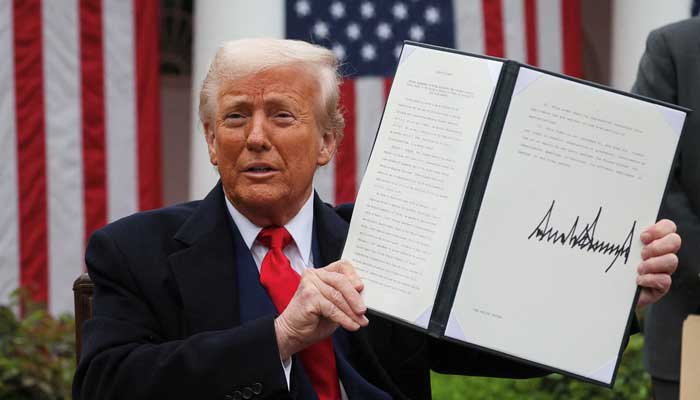Pakistan faces a significant new trade barrier. The United States has imposed a 19% tariff on Pakistani goods. President Donald Trump announced this steep import duty alongside tariffs targeting 68 other nations. These new trade penalties take effect next week. Duties range from 10% to 41%.
Trump called this move necessary. He wants to fix unfair trade imbalances. Protecting US economic and security interests is his goal. An executive order formalized the decision just before a Friday deadline. The order lists higher import duty rates for the 69 partners. Some nations made deals to lower tariffs. Others got no chance to negotiate with Trump’s team.
Goods from countries not on the specific list face a blanket 10% US tariff. Trump stated many partners offered insufficient terms. He felt they failed to fix trade imbalances or align on key security matters. The new tariffs represent a major shift.
Canada received particularly harsh treatment. Trump issued a separate order against them. He raised the tariff rate on certain Canadian goods to 35%, up from 25%. Trump accused Canada of failing to cooperate on stopping fentanyl flows into the US.
Mexico, however, got a temporary reprieve. Trump delayed planned 30% tariffs on many Mexican goods for 90 days. This gives more time to negotiate a broader trade pact. The delay followed a phone call between Trump and Mexican President Claudia Sheinbaum. She called the talk “very good” and confirmed the tariff increase was avoided.
About 85% of US imports from Mexico meet USMCA rules. This shields them from the 25% fentanyl-related tariffs. But Trump confirmed a 50% tariff remains on Mexican steel, aluminium, and copper. A 25% duty also stays on Mexican autos and non-compliant goods. Trump also claimed Mexico agreed to end non-tariff trade barriers immediately.
South Korea secured a deal. It accepted a 15% tariff on exports, including autos. This was lower than the threatened 25%. Korea also pledged $350 billion in US investments chosen by Trump.
India faces potential 25% tariffs. Talks stalled over access to India’s farm sector. New Delhi vowed to protect its farmers. This triggered political opposition and hurt the rupee’s value. Trump also threatened penalties over India buying Russian oil.
These new tariffs come as evidence shows existing duties push consumer prices higher. Recent data revealed big jumps in prices for home furnishings, recreational goods, vehicles, and clothing.
Trump also hit Brazil with a steep 50% tariff. This action escalates a fight over Brazil’s prosecution of his ally, former President Jair Bolsonaro. However, Trump softened the blow by excluding key sectors like aircraft and orange juice.
The legal basis for Trump’s sweeping tariffs faces serious challenges. Federal appeals court judges questioned his use of the 1977 emergency powers law. Trump declared an emergency over the US trade deficit to justify his reciprocal tariffs. A lower court already ruled he exceeded his authority. Appeals court judges seemed sceptical during recent arguments.
Meanwhile, US Treasury Secretary Scott Bessent hinted at a potential, but unfinished, trade deal with China. US negotiators pushed back hard in talks this week. China faces an August 12 deadline for a lasting agreement to avoid escalating tariffs.
Pakistan must now navigate this new 19% tariff landscape for its US exports. These import duties significantly increase the cost of Pakistani goods in the American market. The impact on Pakistan’s export economy could be substantial.


